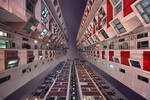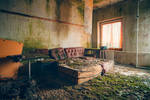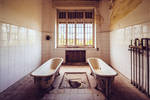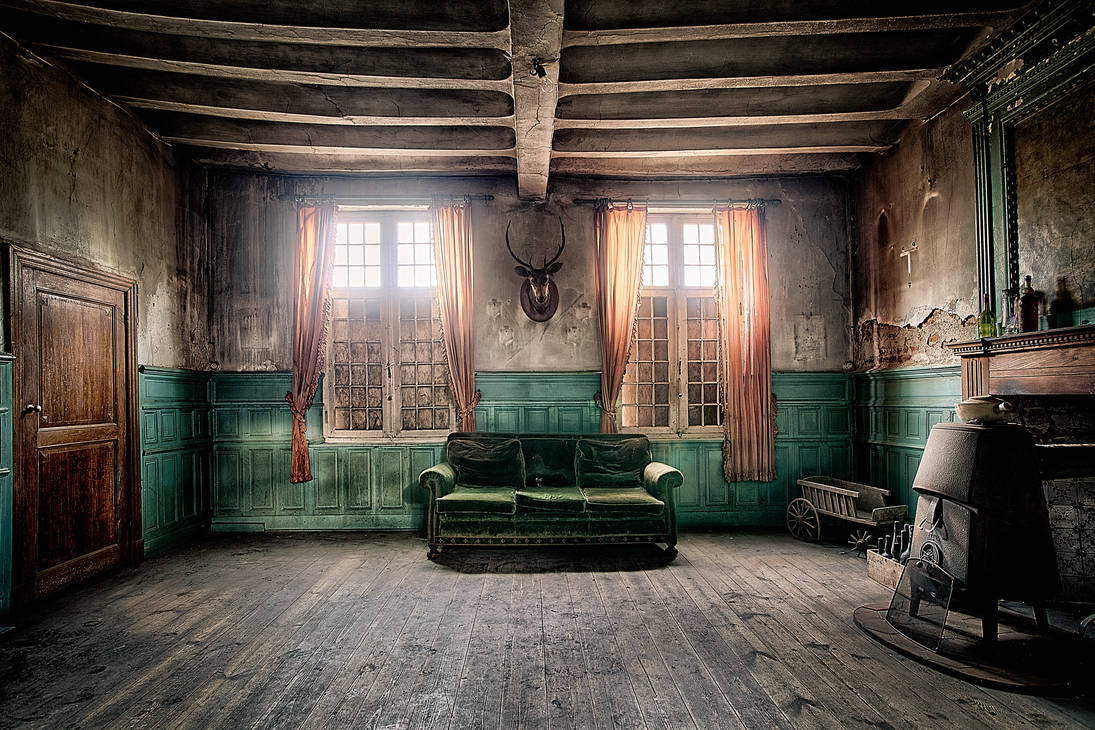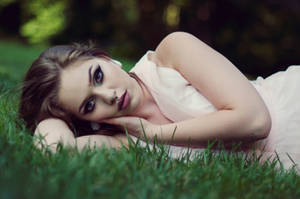Could you introduce yourself to us? How long have you been taking Urban and Rural photographs?
ragekay:
Hello, I’m Käthe and I’m a hobbyist photographer from Germany. I started doing photography quite some time ago, I don’t know a real date, but it appears long to me as photography always fascinated me. In 2009/2010 I got into the urban side of photography.
romainjl:
I am a French photographer living in Hong Kong for 6 years. This city inspires me a lot, especially for its extremely urbanized aspect. I have been shooting a few series in this city that have been published as photo book: Vertical Horizon, Wild Concrete and my latest one, The Blue Moment that will be released in May.
Liek:
My name is Angelique Brunas, I’m from the Netherlands and one of my biggest passions is photography. I’ve bought my first camera in 1999, my real interest in photography was born when I’ve started macro photography in 2001. From the smallest things in the world I’ve made a switch to the bigger urban world in 2008.
Which type of Urban and Rural photography do you tend to focus on? What do you love about that type of Urban and Rural photography?
ragekay:
When I started doing photography I thought architecture must be the most boring thing to make pictures of, well and then I started with urban exploration.
Nowadays I am especially fascinated by old and abandoned buildings and industry ruins, but also by modern architecture. Still I would say that don’t have a special focus. The inspiration comes mostly from the places themselves. A modern and high-tech looking building can inspire me to very symmetric and “clean” looking pictures, while old and abandoned buildings bring out darker and more gritty looking pictures.
I always try to apply new techniques and different settings. Doing urban exploration taught me a lot about the basics of photographing architecture. How to follow symmetry of the building, trying to make all the lines connect and playing around with the perspectives. This is what I build on when it comes to modern buildings.
romainjl:
What I have been focusing on the most are Architecture and Cityscapes photographs. I love the process of doing these photos. It involves a lot of scouting and exploration in many places that I would probably not visit if it wasn't for a photography purpose.
Liek:
My interest and focus is urbex ( urban exploration ) photography. I must admit I’m kind of spoiled with the locations I’ve visited these past years. I loved each and everyone of them no matter how big or small they where! I do have a weakness for residential buildings like chateau’s, villa’s, farms and houses. It always amazes me to see the history and story behind these gems that have been untouched for so many years in some cases.
What do you find most challenging when taking Urban and Rural photographs? Is it difficult to find interesting locations? Do you have to travel a lot?
romainjl:
I am lucky to live in a city that I find the most inspiring. I think that one of the challenge when being an urban photographer is to manage to shoot the city in a way that wasn't done before. But the biggest challenge is actually to protect your work. Like for example my series Vertical Horizon have got quite viral on social networks and media. And since some of the photos are shot in spots that are easily accessible, there are loads of people taking photos with the exact angle, at the same location and putting their name on it. I don't mind people doing it for fun, or personal use. But I find it quite annoying when some people present it as their own new original work and try to get attention with it.
Liek:
The most challenging will always be to enter a place, you never know what to expect. There can always be someone else or it can be really dangerous to walk around in a rotten building that has collapsed. When I’ve started with urbex in 2008 this was a hobby not many people had. So when you where inside and heard footsteps it was almost never from other explorers but from a squatter, thieves or the police. These days when you enter a place you do not have to be surprised to find 10 or more other explorers in there…
It is hard to find locations sometimes, some you’ll find in a few minutes and some will take months to find. Where I live we do not have many abandoned buildings so I always have to travel. So far I’ve explored locations in France, Luxembourg, Germany, Belgium and the Netherlands. I would love to visit other countries in the near future.
ragekay:
Urbex photography is really a fascination which begins with searching for places. This can take quite some time, as I usually try to find new places that haven’t been visited by many photographers yet.
Usually I start with a (sometimes weeks long) search for interesting spots. The internet is the main tool for doing that. When I find something interesting I try to collect as much information about it was possible. Things like the location, the surrounding area of the place, past owners and the history often turn up fascinating results. A few years ago for example I visited an abandoned Chateau in Belgium which once belonged to a very rich and aristocratic family. It really stimulates ones fantasy what might’ve happened to them. If only these old walls could talk – so much gossip
On the other hand there are often very real problems combined with my hobby. Driving out to places takes both time and money, which to me are the most valuable resource. This is why I like to join up with two other people. We are photographing and exploring together for more than four years. We know each other very good what is very helpful especially in risky building. That saves everybody both organizational time and travel money.
Once you are at a place it often goes completely different than expected (no matter how good you planned beforehand). But without that adrenaline I would definitely miss something
Usually I do two or three bigger trips a year. Big means a travel by car of 4-6 hours. Often you find interesting spots in your closer area though. It’s all about keeping your eyes open whenever you’re on the road, especially when being on vacation. Often there are hidden treasures behind wildly growing hedges.
This is what I prefer over the well-known and highly frequented lost places that everyone knows anyway.
When I’m exploring my neighborhood or locations near my home, I do this always alone – to get a little bit of the post-apocalyptic Fallout feeling with a song from Billy Holiday in my ears.
What photography gear do you use? What do you recommend beginners to use?
ragekay:
I have a Canon 50D and when I have the opportunity I use a Canon 5D Mk 2. My favorite lens is the Sigma 20mm 1.8. I also use the Sigma 12-24mm. With that I always keep a 35mm lens in my backpack and a 50mm prime lens for detailed shots.
Also very important is a good tripod. You can use any camera and lens to make good photos but never ever trust cheap tripods. If there is wind, unstable ground or just cheap material your camera’s life is on the line. A good tripod is lightweight (carbon fiber is the choice material here, I chose aluminum but if I had the money, I would buy a carbon fiber one) plus it provides both stability and flexibility, for example for shooting ceilings without crouching around in the dirt. So investing at least 200 bucks into a good tripod is essential in my opinion!
I decided to spend 200€ on a tripod from ‘Sirui’ five years ago and it never let me down.
Liek:
The tools I use.
Camera's: Nikon D300, Nikon D70s, Nikon coolpix
Lenses: Sigma 50 mm, Nikkor 18-200 mm, lensbaby
Tripod
PP software: Photomatix, photoshop
If you want to start with photography my suggestion would be to start with a simple camera. I’ve started with a Nikon coolpix. After that I was not sure what camera to use in the future so I’ve walked in to a camera store and asked if I could hold some camera’s just to see how they feel when holding them. Nikon just seemed to fit better for me.
romainjl:
I am now using a Sony A7R with a few Zeiss lens (16-35mm, 55mm, 135mm).
For a long while I have been using a cheaper camera non full-frame.
A Nikon D5000 with a sigma 10-20mm. I think it is a good one for beginner. I like the rotative screen, it enables the photographer to find creative ways of composing photos.
Could you pick one of your favorite Urban and Rural photographs from your own gallery, and tell us about the process behind its creation?
Liek:
One of my favorite pictures is this one. It’s taken in an abandoned castle in Belgium that is now sold and has a new owner. I’ve named the picture: dreams of decay.
This is a HDR ( high dynamic range ) picture where you take 3 pictures and turn them into 1 picture later with a program like photomatix or lightroom. I try not to overuse the HDR option since it makes colors look really strange.
I use this technique in almost all my urbex pictures. Feel free to check out my website www.brunas.nl for more.
ragekay:
It is hard to pick one favorite as I usually struggle to be completely happy with my own pictures. The location is more often what makes pictures special, so I decided for this one:
This was an abandoned hunters cabin in the Belgian woods that we visited in early 2014. After a five hour drive we got up very early the next day, around 7 am, to approach the place right after sunrise, to have as much daylight as possible.
We managed to get in through a rather small hole in the front door. On one hand it is very sad to see that old and beautiful buildings often get wrecked and smashed by local people who just want to cause damage to things for fun. On the other hand our drive would’ve been for nothing if there wasn’t this hole in the door. The first step when you’re in a new building is to get orientation and make out interesting spots for shots. Depending on the size of the area this can sometimes take up to two hours. This place was really small though so we could start taking pictures right away.
What was hard about this picture was really the light situation. The windows were all blocked off with thick wooden plates, probably applied by the owner to keep out people. It was also complicated to get the lines of the building straight, because the wood was all “bended by the ages”, so to say. I tried five or six different settings and positions for my camera until I finally found the right one for a decent shot. The settings for the picture above were:
F 7,1, 6 seconds, ISO200
Original photo: sta.sh/0khvqpfu3is
It took the original shot in RAW format (of course) so I could work around the bad light situation in the Lightroom software, later at home.
romainjl:
I really like this photo taken in Hong Kong in 2012, and that got really viral online.
I was actually not using any tripods at that time so I was fortunate to find a small wall to put my camera on for taking a long exposure photo. The rotative screen I was talking about helped a lot too.
Additional Comments:
Liek:
Urbex is great, I can not imagine to stop doing this and I intent to keep going till my age tells me to stop. There is an unwritten rule that luckily some urbexers still follow: Take nothing but pictures, leave nothing but footsteps. A negative side note, urbex is not what it used to be anymore. Furniture gets stolen, places get trashed, sprayed and locked within several weeks these days. In other words, you’ll have no time to explore before a place gets trashed and locked. If you do find it before that happens you’ll have to stand in line to take some pictures. If you want to do something new and original, don’t start with urban exploration.
romainjl:
Urban photography is composed of a large range of different style of photo. I think that everyone should give a try to all pf the different sub-categories in order to find what inspire them the most. Then the best advice is just to shoot a lot to perfect your own style.



